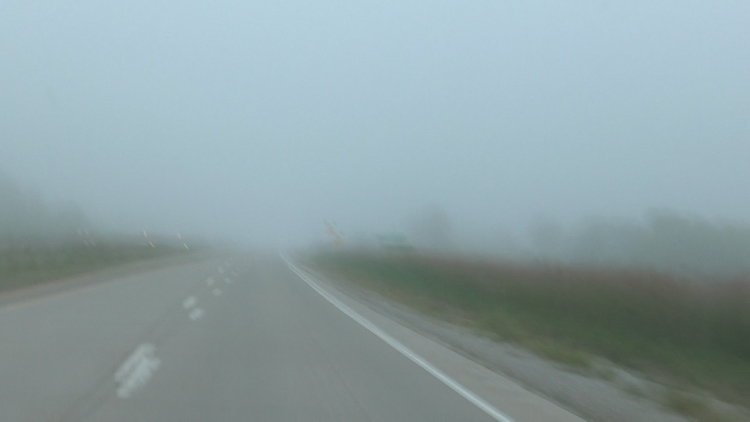desecrations

begins in the fog
follows nearly empty roads
from seven in the morning
then ends in a Days Inn
in Kuttawa, Kentucky
a motel off the side of the highway
steak restaurant waffle restaurant gas stations
the next day drive around then through
the outskirts of Atlanta, Georgia the car
miraculously avoids all the visible traffic congestion
which take other offramps to other routes
the omniscient GPS god
highways give way to country roads through
pecan tree orchards cotton fields peanut fields
by signs to Jimmy Carter National Historic Site
Plains Georgia boiled peanuts Americus
motels Mexican restaurants gas stations vacant shopping malls
signs for Andersonville a short drive
from where the newer malls with drive through banks
invigorated
the drive to Americus Georgia from Des Moines Iowa

once upon a time
in the land to be
forgotten men clustered
on the field of grass
huddled together bent over
sod chewed by feet shorn of boots
toes settled in dirt become mud between
well wetted water from
the spring at the bottom of the hill
enclosed by a stone house
still spills then flows
inside the stockade wall constructed
of rough hewn logs nearly 16 feet high
separated from a light wall by a space of 19 feet
which was known at the time as "the dead line"
because anyone found on this land of dirt and mud
was immediately shot by sentries in the pigeon roosts
rubberized
yellow Rain Gear
protects the workers
from winter sleet
digging deeper holes
beneath the asphalt
into the dirt
walking in between
orange plastic
traffic drums
around
pea gravel piles
used to fill holes
in the asphalt
placed inside
a lunchonette napkin holder
a generic android tablet
fits where a picture
is meant to be
that tablet plays a video of men working
wearing yellow rain gear
on a street in park Slope Brooklyn
in the raining sleet

The Camp Sumter military prison at Andersonville was one of the largest Confederate
military prisons during the Civil War. During the 14 months the prison existed,
more than 45,000 Union soldiers were confined here. Of these, almost 13,000 died.
Located deep behind Confederate lines, the 26.5-acre Camp Sumter was designed for a maximum
of 10,000 prisoners. At its most crowded, it held more than 32,000 men, many of them wounded
and starving, in horrific conditions with rampant disease, contaminated water, and only minimal
shelter from the blazing sun and the chilling winter rain. In the prison's 14 months of existence,
some 45,000 Union prisoners arrived here; of those, 12,920 died and were buried in a cemetery
created just outside the prison walls.
(https://www.nps.gov/ande/learn/index.htm)


